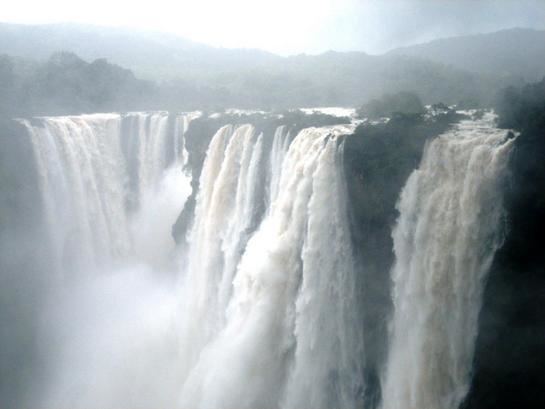 | ||
The state of Karnataka in India has a bittersweet relationship with rains. While its regions of Malnad and coastal Karnataka receive copious amount of rainfall; its north Bayaluseemae region in the Deccan Plateau is one of the most arid regions in the country. Most of the rains received in the state is during the monsoon season. Being an agrarian economy with a large percentage of its citizens engaged in agriculture, the failure of rains can have a crippling effect on the economy of the state. Apart from the benefits in agriculture, the Government of Karnataka has tried to avail other benefits of rainfall using scientific methods. An example of this is the project, Rainwater Harvesting in Rural Karnataka which is initiated by the Karnataka State Council for Science and Technology and is one of the largest rainwater harvesting projects in the world. Agumbe in the Shimoga district is known as one of the places with the highest annual rainfall in India.
Contents
Importance
The economy of Karnataka is mainly agrarian and most of it is dependent on the rainfall; mainly the southwest monsoon. The extent of arid land in the state is second only to Rajasthan. Only 26.5% of sown area (30,900 km²) is subjected to irrigation and hence the rest of the cultivated land is entirely dependent on rainfall. Rainfall also influences the quantity of water available in the rivers which in turn influences the amount of drinking water available to the population and the amount of electricity that can be generated in the hydroelectric power stations in the state. The importance of rainfall is such that Karnataka sometimes had to resort to costly artificial methods like cloud seeding in order to induce rain artificially. Rainfall is also crucial to recharge the depleting ground water and Karnataka has come up with innovative methods like rainwater harvesting in order to solve the drinking water scarcity in the state.
Rainwater harvesting
Karnataka is a pioneer in the concept of rainwater harvesting with The Karnataka State Council for Science and Technology (KSCST) implementing one of the largest rainwater harvesting projects in the world. 23683 schools in rural Karnataka were selected for this project with the main goal of providing drinking water by using the method of rooftop harvesting. In this project, rainwater collected on the rooftop is channeled through a system of PVC pipes and stored in an enclosed surface tank. The pipeline consists of a first-flush filter which flushes out the first rainfall along with other contaminants that may exist on the roof and then subsequent cleaner rainwater is allowed to pass on to the tank. A sand bed filter is used to further eliminate impurities in the water before it gets collected in the tank. Further precautions are taken to prevent dust and insects from entering the tank.
Deficient rainfall
A year of deficient rainfall leads to the following consequences:
Excess rainfall
Heavy rains can lead to a significant loss of life and property and also cause damage to the crops. Excess rains also cause an impact in major cities with inundated roads causing traffic jams. An example of this was in the year 2005 when the Madivala lake overflowed on to the Hosur Road in Bangalore forcing many schools and offices to close.
Rainfall distribution
The average annual rainfall in Karnataka is 1248 mm. The state is divided into three meteorological zones viz. North Interior Karnataka, South Interior Karnataka and Coastal Karnataka. Coastal Karnataka with an average annual rainfall of 3456 mm is one of the most rainy regions in the country. Contrasting this, the region of South Interior Karnataka and North Interior Karnataka receive only 1286 and 731 mm of average annual rainfall.
Districts
The average annual rainfall in the districts of Karnataka varies from 562 mm in the Bagalkot district to 4119 mm in the Udupi District. Bagalkot, Chitradurga and Koppal are the districts which receive the least rainfall whereas Uttara Kannada, Dakshina Kannada, Chickmagalur and Udupi, Hassan districts receive the heaviest rainfall.
